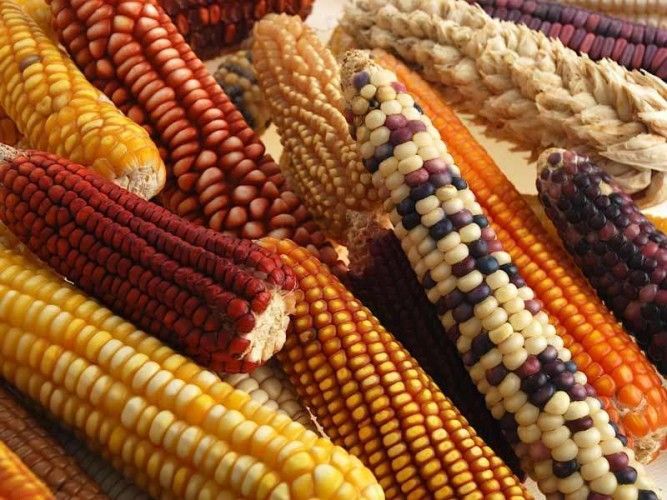Recently the US Department of Agriculture (USDA) proudly reported in its Global Agricultural Information Network (GAIN) report that Peruvian imports of US corn continue to skyrocket, reaching 1.5 MMT (million metric tons) only in the period from January to April 2017.
While until 2013 Peru imported less than 2 MMT yearly from different countries including only a small percentage from the US, since then total imports of corn increased to 3.5 MMT in 2016 with over 90% originating in the States making corn the leading US agricultural product imported by Peru.
According to the report this outstanding performance could be achieved thanks to the US-Peru-Free Trade Agreement which allows duty free corn imports from the US and provides a trade preference.
After reading this the first question that popped into my mind was: why would Peru import corn at all? Peru belongs to the most biodiverse countries in the world and cultivates well over 50 different varieties of corn. In Peru corn comes in all sorts of shapes and colors from white and yellow to purple, brown and black and all these with a wide variety of flavors. What more can anyone want?
Corn is an important and widely used ingredient of animal feed. And with chicken being a staple meat in today’s Peruvian diet – on average each Peruvian consumes 43 kg of chicken per year, in Lima up to 72 kg per year – the necessary 720 million broilers to feed the country in 2017 need food; a lot of it and of course as cheap as possible.
So, Peru simply can’t meet the demand for corn of the growing poultry industry and has to import corn to keep it going. So far so good.
Nevertheless, this leads to a second question: why would a megadiverse country that is proud of the variety found in the country and even promotes it, imports corn from the US?
It is common knowledge that corn belongs together with soy and cotton to the top 3 genetically modified crops in the United States. According to the USDA on 88% of agricultural land in the US assigned to the corn production genetically engineered corn is grown. From these numbers, you could conclude that most of the corn imported to Peru is genetically modified.
Peru, however, banned genetically modified foods in 2012 prohibiting the importation, production and use of GMO foods until 2022 to preserve the countries biodiversity and to support local farmers.
It is strange that even though above mentioned Free Trade Agreement between the US and Peru already became effective in 2009, only shortly after Peru’s GMO ban corn importations from the US grew exponentially.
So how does this fit together? And can we here in Peru be really sure that only non-GMO corn is imported that is fed to our chickens which later end up on our plates as delicious Pollo a la Brasa or Aji de Gallina? If not, so what? Where is the problem?
Now we get into a very controversial topic. While the industry, here especially the company Monsanto, the major player in the genetically modified organism sector and supporters of GMOs sell us genetically engineered seeds, crops and foods as savior which facilitate the cultivation, increase the harvests, benefit the environment, help to feed everyone in the world, provide a better nutrition with overall better quality and taste, ensure longer shelf life and which aren’t bad at all for us, opponents regard it as outright dangerous and harmful to us, animals and our environment.
GMOs are created in laboratories by extracting certain genes from plants, animals, bacteria or viruses and implanting them into the DNA of other plants or animals to make them more productive and resistant to weather conditions, pests and in modern farming used pesticides (herbicides, insecticides, and fungicides).
While this sounds great, we still don’t know about the long-term effects. Fact is with this technique we interfere with the delicate balance of nature.
After 20 years of GMO foods on the market that found their way in most foods we buy today from baby food to drinks, from dairy to meat products, from cornflakes to fruits and veggies, from cooking oils to soya sauce, we see an increase in allergies, antibiotic resistance and cancer in humans linked to GMOs and associated farming techniques including the usage of Glyphosate.
Recent studies also show abnormal tumor growth, changes in the internal cell structure, nerve damage and unexplainable sudden deaths in farm animals fed with animal feed containing GMOs. Additionally, GMOs are known to encourage monocultures, create super-weeds and harm natural ecosystems and crops.
Do we really want that in Peru? Do we really want to jeopardize Peru’s mega-biodiversity? Do we really want and have to feed millions of chickens with imported corn that might be genetically modified and harmful to our animals and us? And can we really trust our government to preserve the countries diversity and protect it and us from GMOs?
In a country like Peru where a lot of people have to think twice about every penny they spend, affordable food is essential. So buying cheap chickens grown in huge industrial facilities outside Lima for example in the desert, is often inevitable. Nevertheless, the time has come to once in a while question Peru's economic successes and ask difficult questions. Until we have the courage to ask these questions and get answers, we even in Peru with all its great variety of fresh produce might have to shop more consciously.


